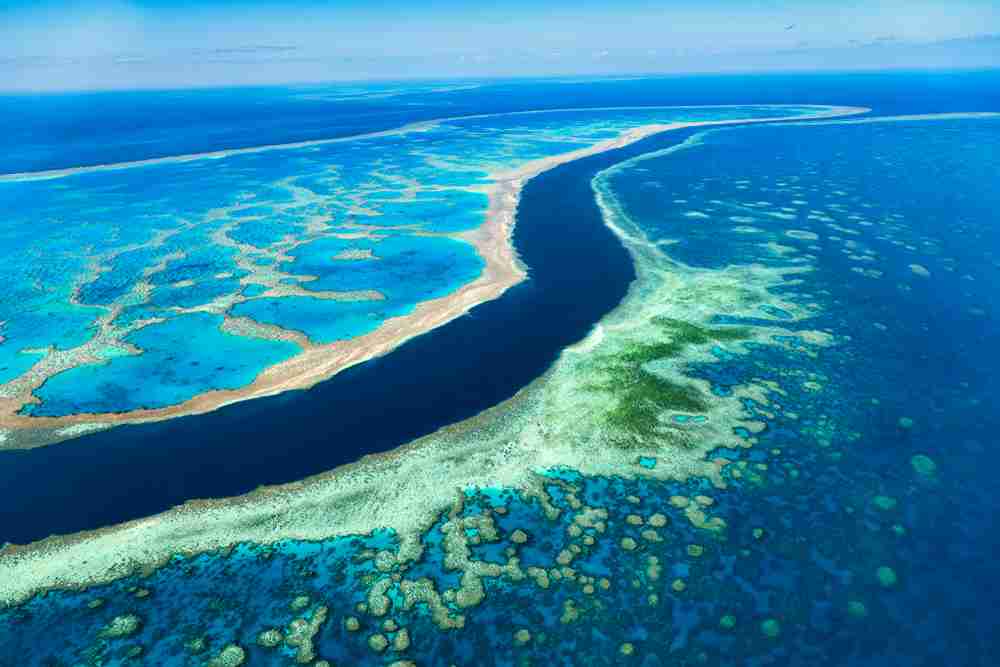Great Barrier Reef, Australia – Travel Tips
Category
Categories
Popular Articles

**Overview of the Destination**
Welcome to the Great Barrier Reef, Australia – a natural wonder of the world and a paragon in the realm of marine biodiversity. Renowned as the largest coral reef system on the planet, the sprawling Great Barrier Reef is home to over 2,900 individual reefs and countless species of marine life, including rare and endangered creatures. From vibrant coral gardens and shimmering fish to the calm azure waters, this World Heritage site promises an unparalleled adventure beneath the waves. It’s an absolute must-visit for any marine life enthusiast or anyone in search of a truly awe-inspiring experience.
**Best Time to Visit**
Though the Great Barrier Reef offers year-round amazement, the best time to visit is generally in the dry season from June to October. During these months, the skies are clear, the waters are calm, and the visibility underwater is optimal. Conversely, if you wish to avoid the crowds and find off-season discounts, you might consider visiting from November to May. Remember though, this season comes with hotter and wetter weather and a higher risk for cyclones. There aren’t any specific major festivals around the Reef, but Australia Day in January and the Whitsunday Reef Festival in August can add to your trip.
**Climate & What to Pack**
Due to its tropical location, the Great Barrier Reef tends to be warm and humid throughout the year. However, there are both wet and dry seasons, so pack accordingly. This typically means light, breathable clothing, ample sunscreen, swimming gear, and prepare for both underwater and onshore adventures. Despite the fairly consistent climate, packing a light rain jacket would be a wise move, especially if you’re visiting in the wetter months.
**Getting There**
The best way to reach The Great Barrier Reef is to fly into Cairns Airport, the closest international gateway. From there, it’s a short journey by boat to reach the reef. Domestic flights into Townsville and Rockhampton serve the southern parts of the reef. Australians generally require no visa for travel, but international travelers should check current visa requirements before their trip.
**Getting Around Locally**
Once you are there, travel between different parts of the reef is typically by boat. Various operators offer scheduled and charter services. For on-land exploring, hiring a car, bike, or using taxis and local buses are the best options.
**Safety Tips**
The Great Barrier Reef is generally a safe destination. Nevertheless, exercise caution while swimming to avoid dangerous marine life such as sharks, poisonous fish, and jellyfish. Check with local authorities for updates, always stick to designated swimming areas, and consider traveling with a guide. Keep the important Australian emergency number, 000, on speed dial. Respect local customs and the natural environment to ensure a pleasant and respectful visit.
**Top Things to Do & See**
Snorkeling and Scuba diving are the premier ways to experience the reef’s dazzling aquatic life. Don’t miss a trip to the idyllic Whitsunday Islands or a chance to see the reef from above with a helicopter flight. Be sure to visit the Reef HQ Aquarium at Townsville for an amazing indoor dive experience.
**Where to Stay**
For luxury stays, consider the Qualia Resort in Hamilton Island or the Lizard Island Resort. Mid-range options like the Heron Island Resort and Mantaray Island Resort offer great value. Budget travelers and backpackers can opt for accommodations in Cairns or Airlie Beach.
**Food & Local Cuisine**
Be sure to savour the fresh seafood, fruits, and vibrant indigenous foods. Popular eateries in Cairns like The Raw Prawn and Tha Fish serve up superb local dishes. Cafes, street food joints, and eateries are plentiful along the coastal regions.
**Cultural & Practical Tips**
The official language is English, and the currency is the Australian Dollar. WiFi access is readily available in most areas. Australia uses Type I plug and operates on 230V voltage.
**Sustainable or Responsible Travel Tips**
Respect the Reef! Pay attention to guidelines on touching coral or approaching marine life. Consider taking tours with eco-accredited operators to reduce your environmental impact. Never litter, and think about using environmentally friendly sunscreens to stop harmful ingredients reaching the ocean.
And finally, remember that experiencing the Great Barrier Reef is a rare privilege. Take your time, soak up every moment, and remember, the real beauty of the Reef isn’t just about seeing it, but also about preserving it for future generations.










